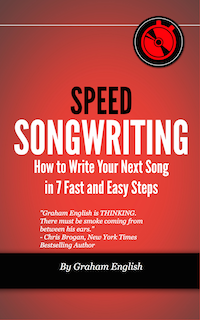
Melody writing isn’t a mystery. It’s a muscle. And like any muscle, the more you train it, the stronger it gets.
This four-week melody workout is designed to sharpen your instincts, help you generate better ideas faster, and make sure you never run out of hooks.
The secret? Structured daily exercises. Follow this plan, and in 30 days, you’ll be writing melodies that stick in people’s heads—and refuse to leave.
Week 1: Rhythm First—Melody Second
Most songwriters start with notes. That’s a mistake. Rhythm is what makes a melody feel alive. So this week, forget about pitches. We’re focusing on rhythm.
Here’s what to do each day:
- Clap and Speak – Listen to a song you love. Clap along to the vocal melody, then speak the rhythm without the pitches. If it feels strong on its own, it’ll work with notes.
- One-Note Melodies – Pick one note on your instrument. Now, using only rhythm, create a melody over a basic chord progression.
- Micro Hooks – Write a 2-bar rhythmic phrase. Repeat it with slight variations. This is how the best pop hooks are built.
By the end of the week, you’ll start hearing melodies as patterns of movement, not just notes floating in space.
Week 2: The 3-Note Rule
Most great melodies are built from small, simple ideas. This week, we limit ourselves to just three notes at a time.
Try this:
- Pick Three – Choose any three notes that feel comfortable in your vocal range.
- Create a Motif – Using only those three notes, craft a short phrase. Repeat it with a twist. Move it up or down. Change the rhythm.
- Sing First, Play Second – Your voice is your best tool. Hum before touching an instrument. This keeps you from relying on muscle memory instead of instinct.
By keeping things simple, you’ll learn how to squeeze the most out of a small idea—just like the best songwriters do.
Week 3: Shape and Motion
Melodies aren’t just collections of notes—they’re journeys. The shape they take determines how memorable they are.
Here’s your focus this week:
- Step vs. Leap – Write one melody that moves mostly by step (notes next to each other). Then, write one that leaps (skipping notes). Notice how they feel differently.
- Up vs. Down – Start a melody low and gradually move up. Then try the opposite. How does each feel emotionally?
- Mirroring – Take a line you wrote. Flip it upside down. If your original melody went up, this one goes down.
By the end of this week, you’ll understand how shape influences emotion—and you’ll be able to control it.
Week 4: The Power of Repetition
Listeners don’t fall in love with a melody because it’s complex. They love it because they recognize it. Repetition is what makes a melody stick.
This week, focus on:
- Looping Phrases – Write a short melody and repeat it. Change just one thing each time—maybe a rhythm, maybe a single note.
- Call and Response – Write two short phrases where the second one echoes or answers the first.
- Limit Yourself to Four Bars – The biggest mistake songwriters make? Writing melodies that are too long. Stick to four-bar phrases, and let them breathe.
By mastering repetition, you’ll write melodies that people hum after hearing them once.
Final Thoughts
This 4-week melody workout isn’t magic. It’s discipline. The more you practice these structured exercises, the faster you’ll develop your instincts. And the better your instincts, the easier it becomes to write melodies that get stuck in people’s heads.
Start today. Stick with it. And in 30 days, you’ll be a completely different songwriter.

Enter your first name and email address below and click “GET ACCESS NOW!” to get the Speed Songwriting Cheat Sheet delivered to your inbox!
We guarantee 100% privacy. Your information will not be shared.

Leave a Reply